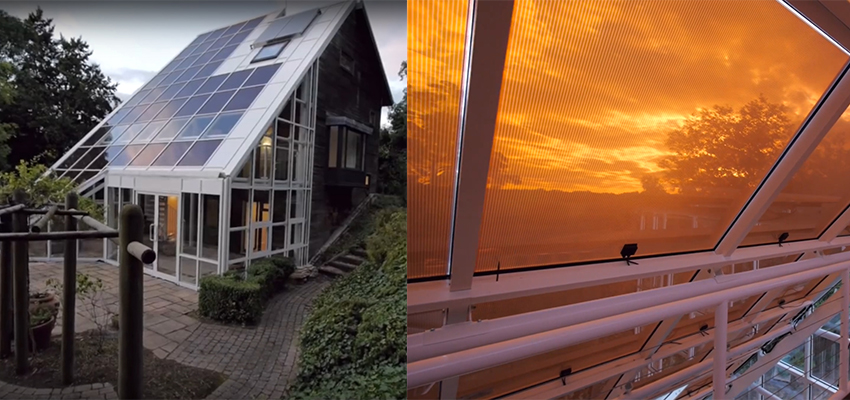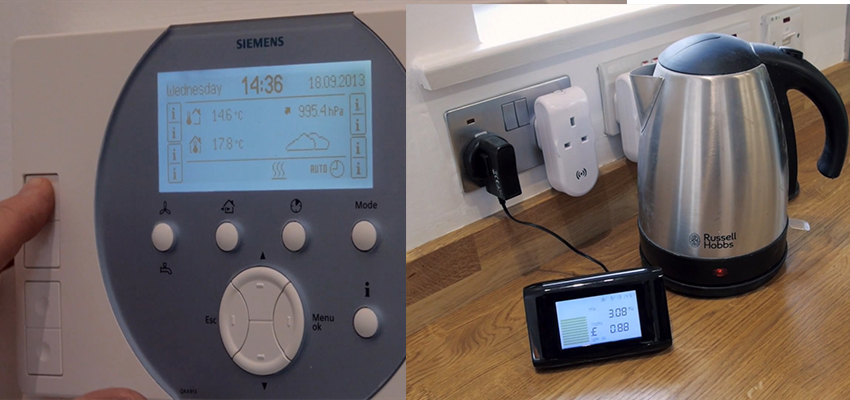Just a few years ago, houses offered very basic services. However, the situation is rapidly changing. In response to the need to reduce energy consumption and make buildings self-sustainable and more comfortable, a wide range of new systems are entering the Smart Building eco-system. From solar-thermal cladding and the Nest thermostat to structural 3D printing and self-healing concreate, the future is certainly encouraging and energy efficient.
Selectaglaze works on a range of projects, product tests and events with the BRE (Building Research Establishment), who is committed to taking energy efficiency and smart living to the next level. The BRE Innovation Park in Watford, London champions modern methods of construction and showcases small scale demonstrations of pioneering constructions and technologies. An example of this is the smart home, designed by the BRE and British Gas.
 The Smart Home
Originally built 20 years ago and featured on the BBC as the “House of the Future”, the three-bedroom property was firstly equipped with a plethora of energy-efficient features and functions: ground-breaking for its time. The self-filling bath would be activated by using a landline to call the house and remotely get the taps running. It also housed intelligent lighting; turning off when no movement was detected and allowed a pathway to be lit at night when walking to the bathroom.
The smart home has recently undergone an extensive retrofit to re-equip it with the latest energy-efficient features and functions to demonstrate the energy savings that can be made through investing in smart technologies. The update has advanced the range of controls to the heating, lighting, ventilation, water and security. The latest air source heat pump technology has been incorporated to provide warmth via app-enabled advanced controls. Furthermore, the house has a new solar thermal system. Pioneering 3mm thick insulating plaster has been applied and finished with a heat-reflective paint to improve thermal performance, whilst paint with light reflective panels on the internal walls greatly enhances brightness thus reducing lighting needs. Wi-Fi connection plugs allow appliances to be turned on or off via smartphone and the front door showcases advanced electronic locking with a car style remote key.
The Smart Home
Originally built 20 years ago and featured on the BBC as the “House of the Future”, the three-bedroom property was firstly equipped with a plethora of energy-efficient features and functions: ground-breaking for its time. The self-filling bath would be activated by using a landline to call the house and remotely get the taps running. It also housed intelligent lighting; turning off when no movement was detected and allowed a pathway to be lit at night when walking to the bathroom.
The smart home has recently undergone an extensive retrofit to re-equip it with the latest energy-efficient features and functions to demonstrate the energy savings that can be made through investing in smart technologies. The update has advanced the range of controls to the heating, lighting, ventilation, water and security. The latest air source heat pump technology has been incorporated to provide warmth via app-enabled advanced controls. Furthermore, the house has a new solar thermal system. Pioneering 3mm thick insulating plaster has been applied and finished with a heat-reflective paint to improve thermal performance, whilst paint with light reflective panels on the internal walls greatly enhances brightness thus reducing lighting needs. Wi-Fi connection plugs allow appliances to be turned on or off via smartphone and the front door showcases advanced electronic locking with a car style remote key.
 Smart meters
Going forward, it is expected that the adoption of smart building materials and technology will rise together, as benefits like reduced operating costs and increased energy efficiency become more apparent in the next few years. To meet the challenges of tomorrow, the construction industry must recognise that sustainability is a collective effort – globally, nationally and locally. Although smart buildings cost considerably more to construct, their benefits overshadow the initial cost in the long term. As more technology and innovations are brought to the market, automation will make the home experience simpler and more pleasant. Voice control of home technologies will be commonplace by the end of 2018.
If there is a real understanding of the challenges posed by the environment, we can have a significantly smarter impact on the built environment within the next decade.
Smart meters
Going forward, it is expected that the adoption of smart building materials and technology will rise together, as benefits like reduced operating costs and increased energy efficiency become more apparent in the next few years. To meet the challenges of tomorrow, the construction industry must recognise that sustainability is a collective effort – globally, nationally and locally. Although smart buildings cost considerably more to construct, their benefits overshadow the initial cost in the long term. As more technology and innovations are brought to the market, automation will make the home experience simpler and more pleasant. Voice control of home technologies will be commonplace by the end of 2018.
If there is a real understanding of the challenges posed by the environment, we can have a significantly smarter impact on the built environment within the next decade.
 The Smart Home
Originally built 20 years ago and featured on the BBC as the “House of the Future”, the three-bedroom property was firstly equipped with a plethora of energy-efficient features and functions: ground-breaking for its time. The self-filling bath would be activated by using a landline to call the house and remotely get the taps running. It also housed intelligent lighting; turning off when no movement was detected and allowed a pathway to be lit at night when walking to the bathroom.
The smart home has recently undergone an extensive retrofit to re-equip it with the latest energy-efficient features and functions to demonstrate the energy savings that can be made through investing in smart technologies. The update has advanced the range of controls to the heating, lighting, ventilation, water and security. The latest air source heat pump technology has been incorporated to provide warmth via app-enabled advanced controls. Furthermore, the house has a new solar thermal system. Pioneering 3mm thick insulating plaster has been applied and finished with a heat-reflective paint to improve thermal performance, whilst paint with light reflective panels on the internal walls greatly enhances brightness thus reducing lighting needs. Wi-Fi connection plugs allow appliances to be turned on or off via smartphone and the front door showcases advanced electronic locking with a car style remote key.
The Smart Home
Originally built 20 years ago and featured on the BBC as the “House of the Future”, the three-bedroom property was firstly equipped with a plethora of energy-efficient features and functions: ground-breaking for its time. The self-filling bath would be activated by using a landline to call the house and remotely get the taps running. It also housed intelligent lighting; turning off when no movement was detected and allowed a pathway to be lit at night when walking to the bathroom.
The smart home has recently undergone an extensive retrofit to re-equip it with the latest energy-efficient features and functions to demonstrate the energy savings that can be made through investing in smart technologies. The update has advanced the range of controls to the heating, lighting, ventilation, water and security. The latest air source heat pump technology has been incorporated to provide warmth via app-enabled advanced controls. Furthermore, the house has a new solar thermal system. Pioneering 3mm thick insulating plaster has been applied and finished with a heat-reflective paint to improve thermal performance, whilst paint with light reflective panels on the internal walls greatly enhances brightness thus reducing lighting needs. Wi-Fi connection plugs allow appliances to be turned on or off via smartphone and the front door showcases advanced electronic locking with a car style remote key.
 Smart meters
Going forward, it is expected that the adoption of smart building materials and technology will rise together, as benefits like reduced operating costs and increased energy efficiency become more apparent in the next few years. To meet the challenges of tomorrow, the construction industry must recognise that sustainability is a collective effort – globally, nationally and locally. Although smart buildings cost considerably more to construct, their benefits overshadow the initial cost in the long term. As more technology and innovations are brought to the market, automation will make the home experience simpler and more pleasant. Voice control of home technologies will be commonplace by the end of 2018.
If there is a real understanding of the challenges posed by the environment, we can have a significantly smarter impact on the built environment within the next decade.
Smart meters
Going forward, it is expected that the adoption of smart building materials and technology will rise together, as benefits like reduced operating costs and increased energy efficiency become more apparent in the next few years. To meet the challenges of tomorrow, the construction industry must recognise that sustainability is a collective effort – globally, nationally and locally. Although smart buildings cost considerably more to construct, their benefits overshadow the initial cost in the long term. As more technology and innovations are brought to the market, automation will make the home experience simpler and more pleasant. Voice control of home technologies will be commonplace by the end of 2018.
If there is a real understanding of the challenges posed by the environment, we can have a significantly smarter impact on the built environment within the next decade.- Date
- Category
- The Built Environment